The Integration Cockpit is connecting with your EAM-solution (at least to some providers). In this article we describe the approach:
One of the core components of Integration Cockpit is our Inventory.
It collects integration artifacts periodically (pull or push) in auto-discovery mode. Afterwards the metadata of an interface (e.g. name, id, description, adapters used etc.) is copied into the INTERFACE section of the inventory based on our data model. You can also add interfaces manually or via API.
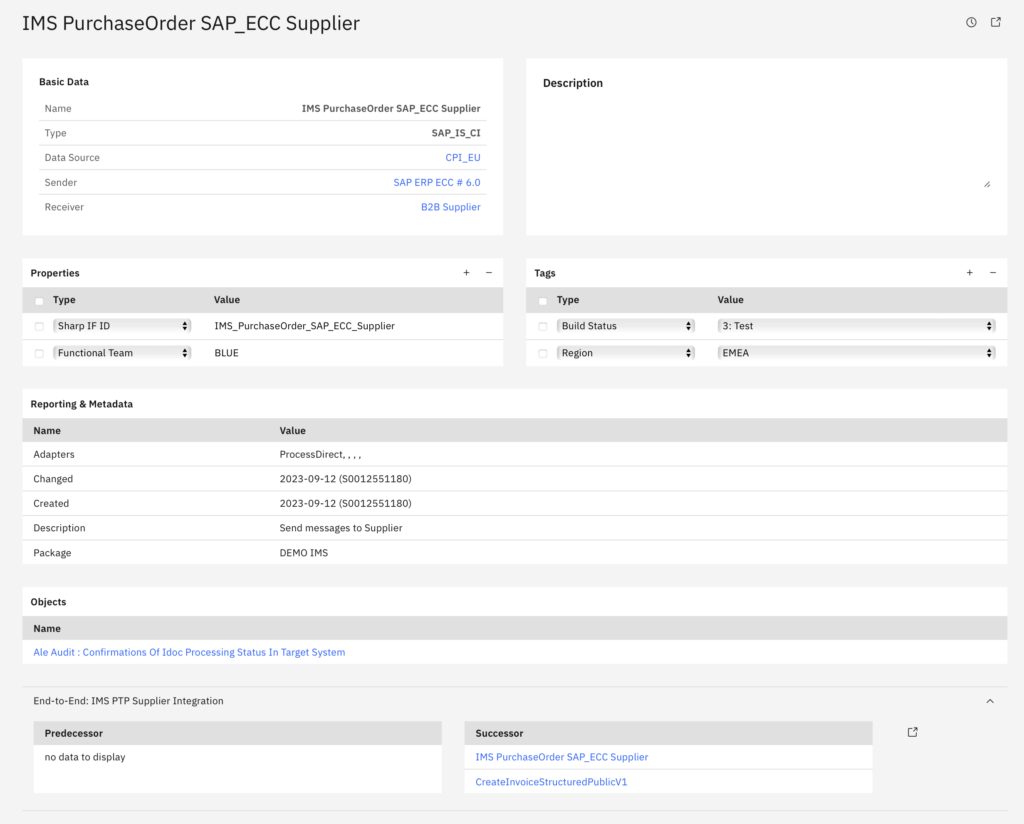
During this copy-step of standardizing an interface into the inventory we also execute 2 mappings to harmonize and enrich the interfaces:
- System Mapping is replacing/setting a Sender and/or Receiver of an interface. You can map against any manually created system or any system imported from your EAM (e.g. Application)
- Object Mapping is setting a relationship to one or more Business/Data Objects. You can map against any manually created object or any object imported from your EAM (e.g. Data Object)
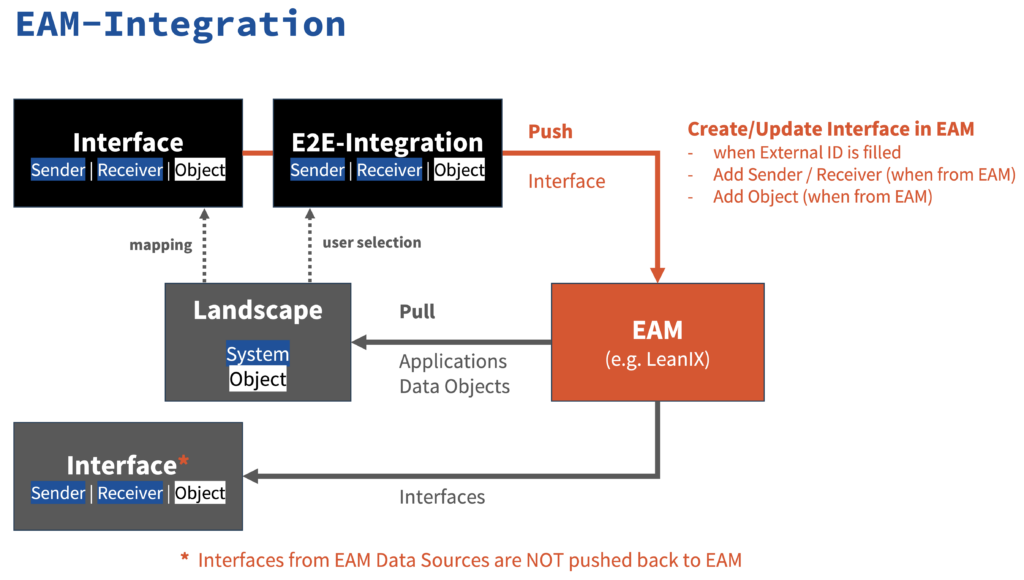
The schema above is showing the data flows, where Interfaces (aka Information Flows) are queried along with Systems (aka Applications, Information Systems) and Objects (aka Data Objects, Business Objects) into the Integration Cockpit. When auto-discovered interfaces are copied into the Inventory, a mapping against the Landscape configuration takes place as explained above. End-To-End (E2E) Integrations are created manually by the integration experts (for now) and contain a sequence of interfaces.
The decision if an interface or E2E-Integration is pushed to EAM is done by the integration expert or automated. The link is done through a (configurable) property which is configured towards your EAM-System (DataSource-Configuration):
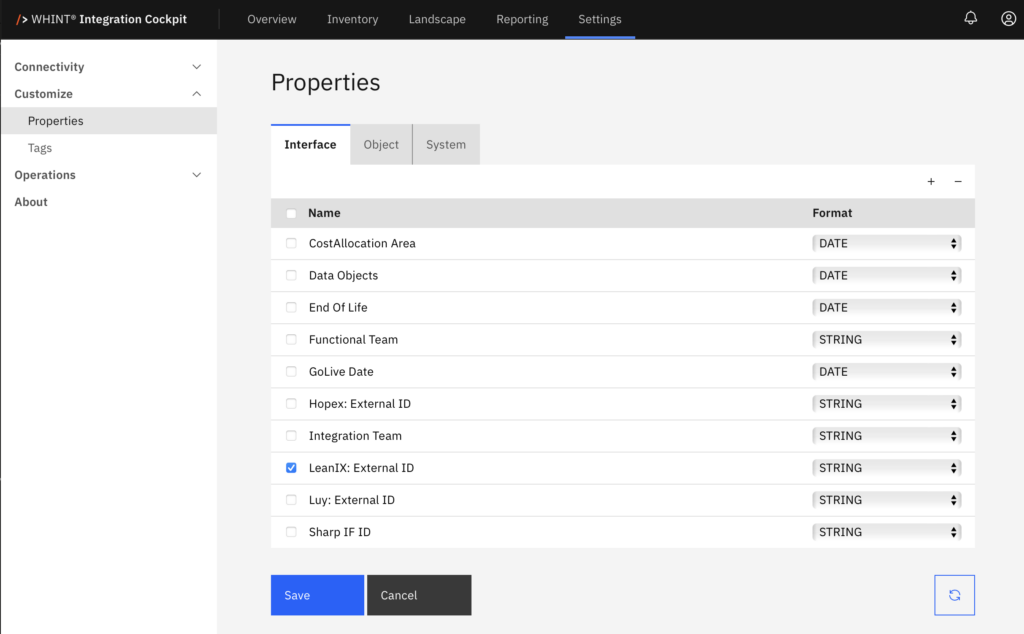
The field is filled manually or automatically (e.g. using the SAP Cloud Integration artefact ID):
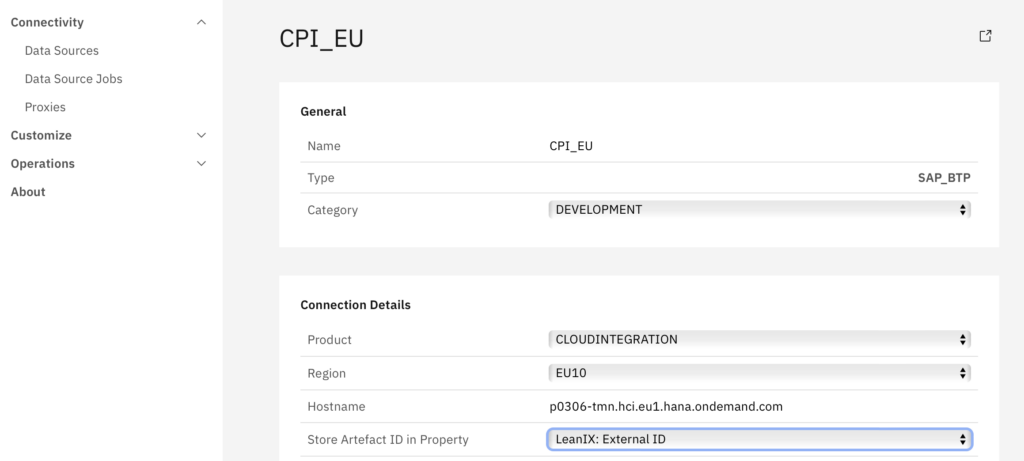
Interfaces in EAM can be created or only updated, this decision is configured towards your EAM-System (DataSource-Configuration):
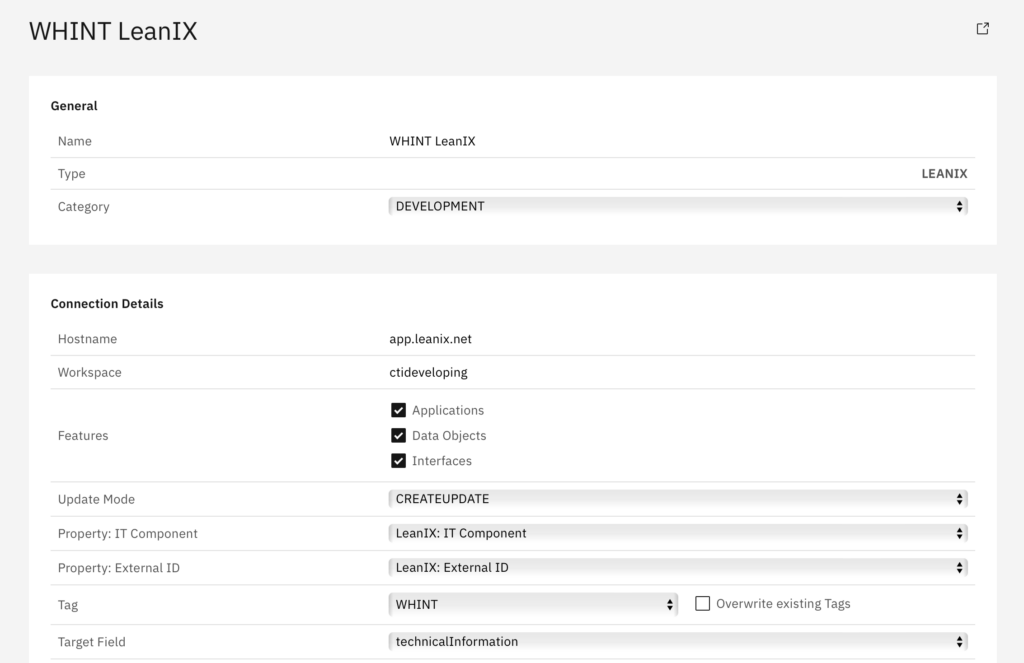
What is copied from the Integration Cockpit to your EAM
- Name (1:1 in CREATE mode, ignored in UPDATE mode – you can rename the interface name in your EAM after creation)
- Type (e.g. mapped to IT component)
- Sender (e.g. source application)
- Receiver (e.g. target application)
- Object(s) (e.g. data object)
- Description, Properties, Tags, Reporting & Metadata are moved as name-value pairs into a configurable target field (see screenshot above: “Target Field”)
Which EAM-Systems are supported
So far this is the list of Enterprise Architecture Management platforms we support:
- LeanIX (SAP)
- LUY (Iteratec)
- Hopex (Mega)
- Bee360 (planned)
Last update: 17. Sep 2024

